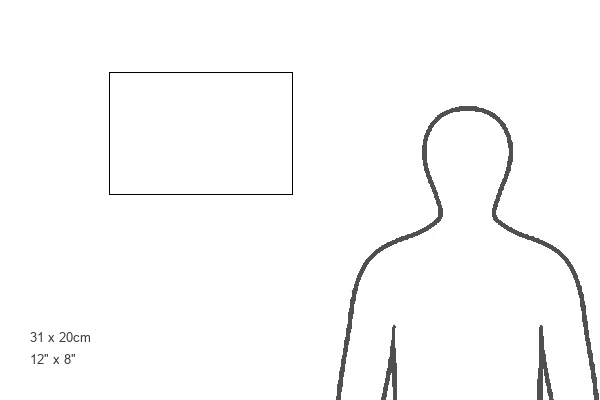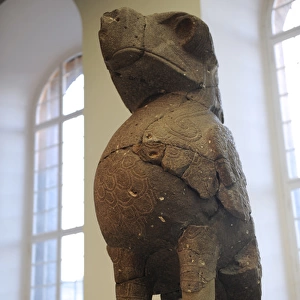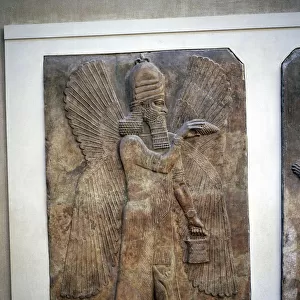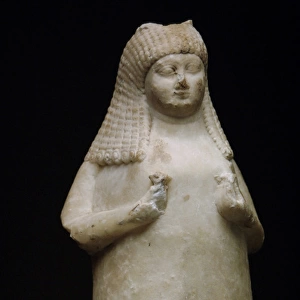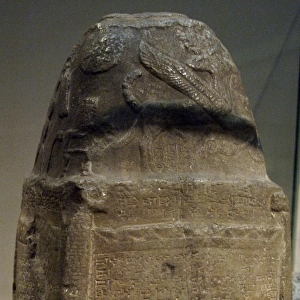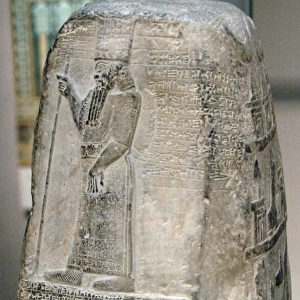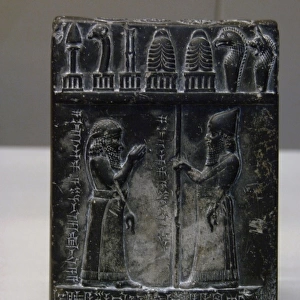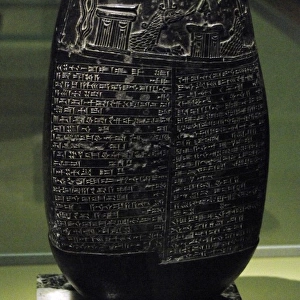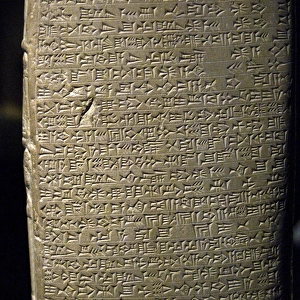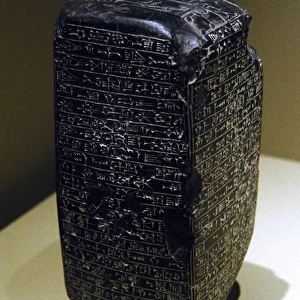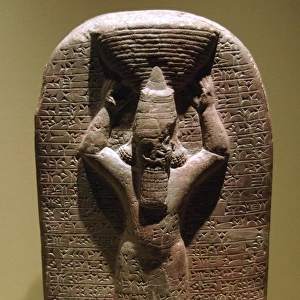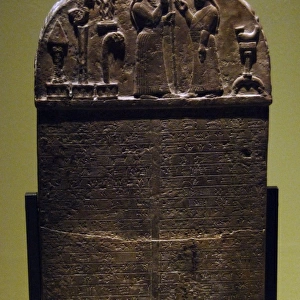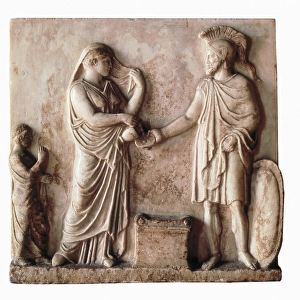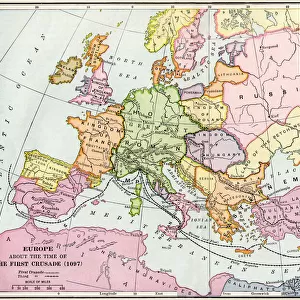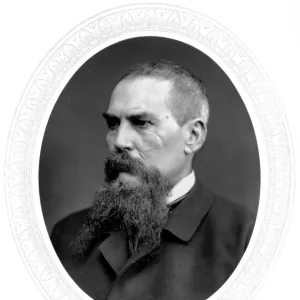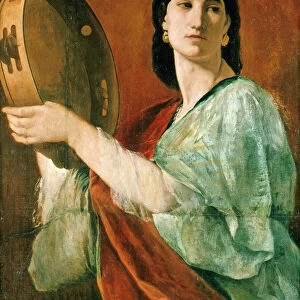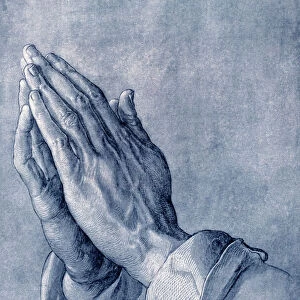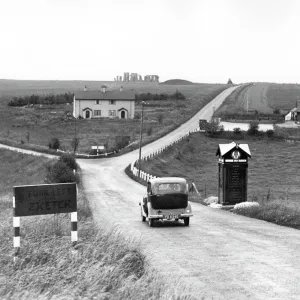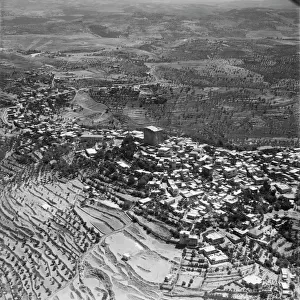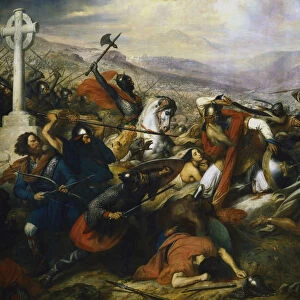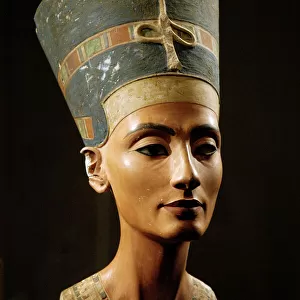Photographic Print > Arts > Artists > N > Neolithic Neolithic
Photographic Print : Halaf culture. (ca 6000-5300 BC). Syria. Orthostat. Winged g
![]()

Photo Prints from Mary Evans Picture Library
Halaf culture. (ca 6000-5300 BC). Syria. Orthostat. Winged g
Mesopotamia. Halaf culture. (ca 6000-5300 BC). Neolithic. Syria. Colossal statue of bird. Temple-Sanctuary of Tell Hall. Basalt. 9th century BC. Pergamon Museum. Museum Island. Berlin. Germany
Mary Evans Picture Library makes available wonderful images created for people to enjoy over the centuries
Media ID 14332146
© Thaliastock / Mary Evans
Archaeological Berlin Colossal Halaf Mesopotamia Mesopotamian Near Neolithic Pergamon Prehistoric Sanctuary Syria Tell Protohistory
12"x8" (30x20cm) Photo Print
Step back in time with our exclusive Media Storehouse range of Photographic Prints, featuring the intriguing art of the Halaf culture (ca. 6000-5300 BC) from Syria. This stunning image, rights managed from Mary Evans Prints Online, showcases an orthostat with a winged glyph, a symbol of the Neolithic civilization that once thrived in the region. Discover the rich history of Mesopotamia with this captivating print, depicting a colossal statue of a bird from the Temple-Sanctuary of Tell Hall, now housed in the Pergamon Museum on Museum Island in Berlin, Germany. Add a touch of ancient history to your home or office with this beautifully detailed and evocative print.
Printed on archival quality paper for unrivalled stable artwork permanence and brilliant colour reproduction with accurate colour rendition and smooth tones. Printed on professional 234gsm Fujifilm Crystal Archive DP II paper. 12x8 for landscape images, 8x12 for portrait images.
Our Photo Prints are in a large range of sizes and are printed on Archival Quality Paper for excellent colour reproduction and longevity. They are ideal for framing (our Framed Prints use these) at a reasonable cost. Alternatives include cheaper Poster Prints and higher quality Fine Art Paper, the choice of which is largely dependant on your budget.
Estimated Image Size (if not cropped) is 30.4cm x 18cm (12" x 7.1")
Estimated Product Size is 30.5cm x 20.3cm (12" x 8")
These are individually made so all sizes are approximate
Artwork printed orientated as per the preview above, with landscape (horizontal) orientation to match the source image.
FEATURES IN THESE COLLECTIONS
> Arts
> Artists
> N
> Neolithic Neolithic
> Arts
> Artists
> S
> Syrian Syrian
> Asia
> East Timor
> Related Images
> Asia
> Syria
> Related Images
> Europe
> Germany
> Related Images
> Europe
> Germany
> Sculptures
EDITORS COMMENTS
This orthostat, a large rectangular stone slab used for the construction of walls in ancient architecture, showcases the artistic prowess of the Halaf culture, which flourished in Syria and parts of Mesopotamia around 6000-5300 BC. During this Neolithic period, the Halaf people developed a distinctive art style characterized by intricate geometric designs and animal motifs. The image etched onto this orthostat depicts a winged g, a deity or symbol of the Halaf culture, in the form of a bird. The bird's outstretched wings and detailed feathers suggest a sense of movement and power. This colossal statue, now housed in the Pergamon Museum on Museum Island in Berlin, Germany, provides a glimpse into the religious beliefs and artistic sensibilities of the ancient civilization. The Temple-Sanctuary of Tell Hall, where this orthostat was originally discovered, is an archaeological site of great significance. The site, located in northern Syria, has yielded numerous artifacts and structures that shed light on the daily life and cultural practices of the Halaf people. The intricacy and craftsmanship displayed in this ancient artwork serve as a testament to the artistic achievements of the Halaf culture during the prehistoric and proto-historic periods. The passage of time has not diminished the awe-inspiring impact of this colossal bird statue, which continues to captivate and intrigue scholars and visitors alike.
MADE IN THE UK
Safe Shipping with 30 Day Money Back Guarantee
FREE PERSONALISATION*
We are proud to offer a range of customisation features including Personalised Captions, Color Filters and Picture Zoom Tools
SECURE PAYMENTS
We happily accept a wide range of payment options so you can pay for the things you need in the way that is most convenient for you
* Options may vary by product and licensing agreement. Zoomed Pictures can be adjusted in the Basket.


